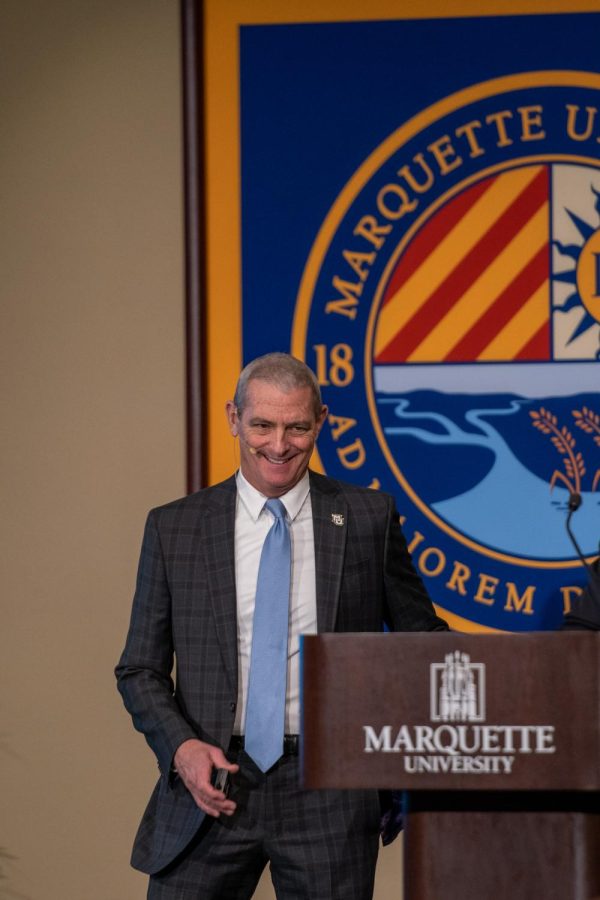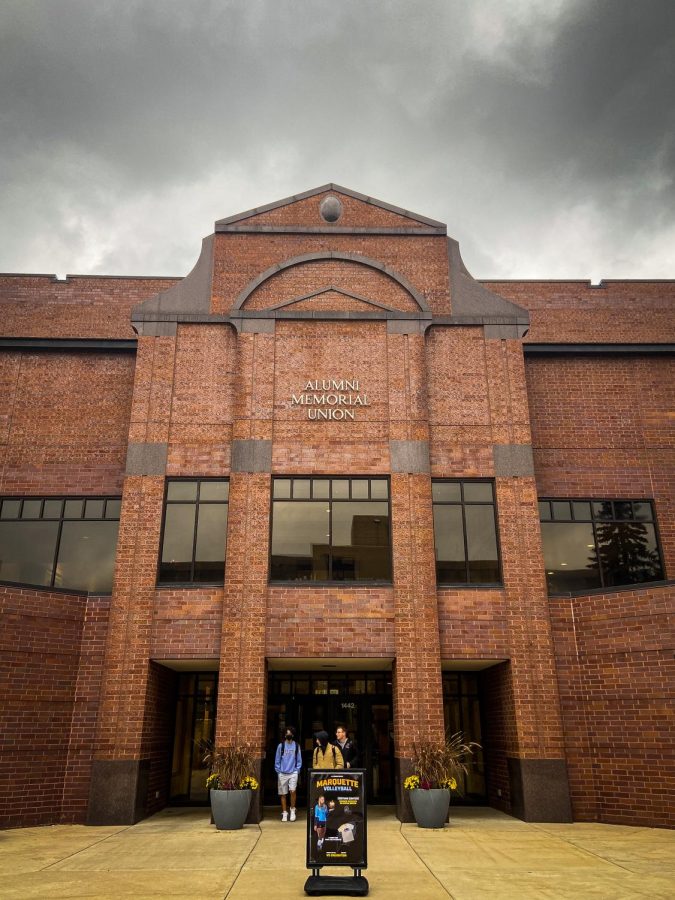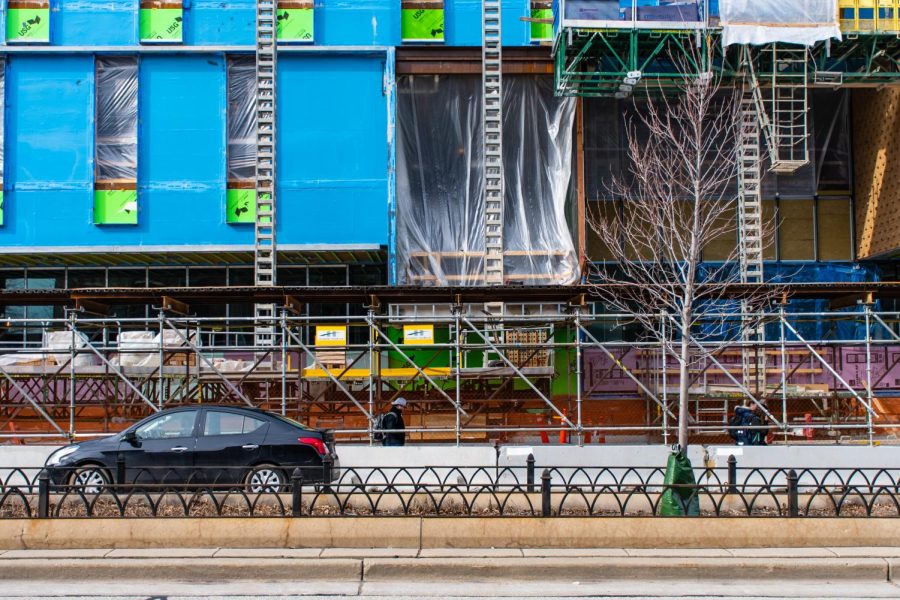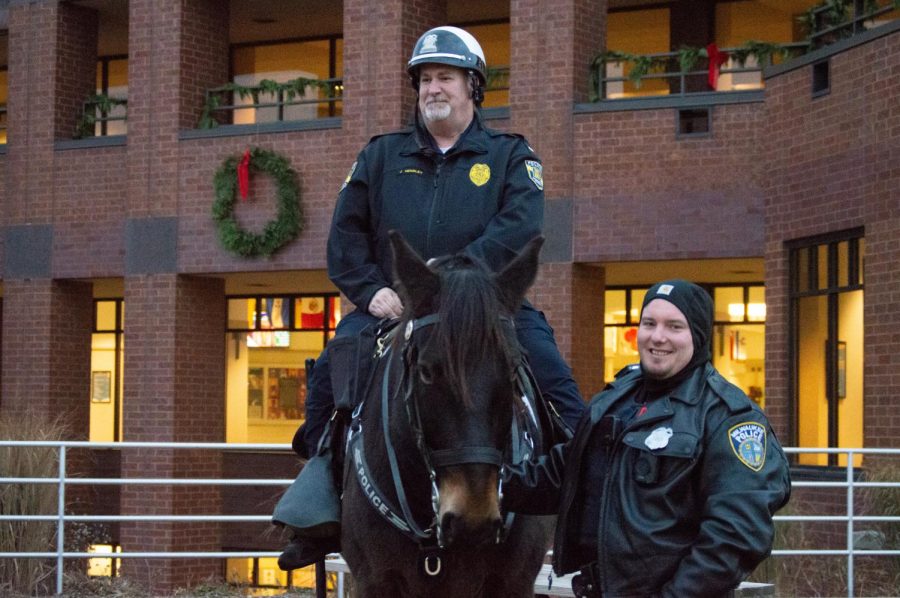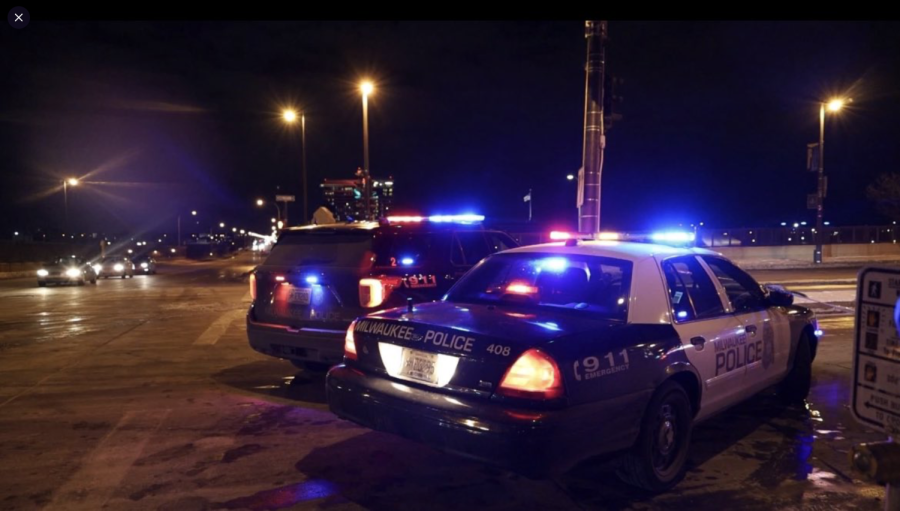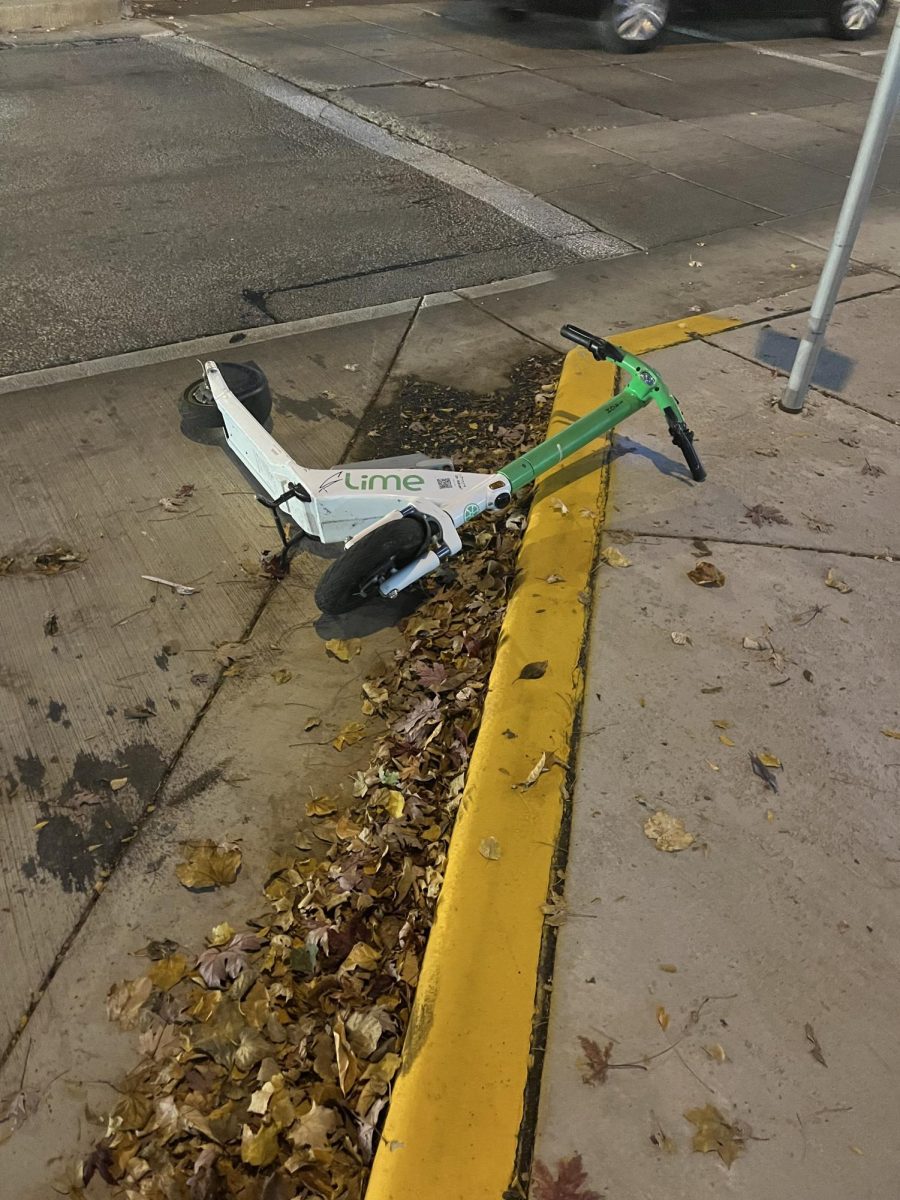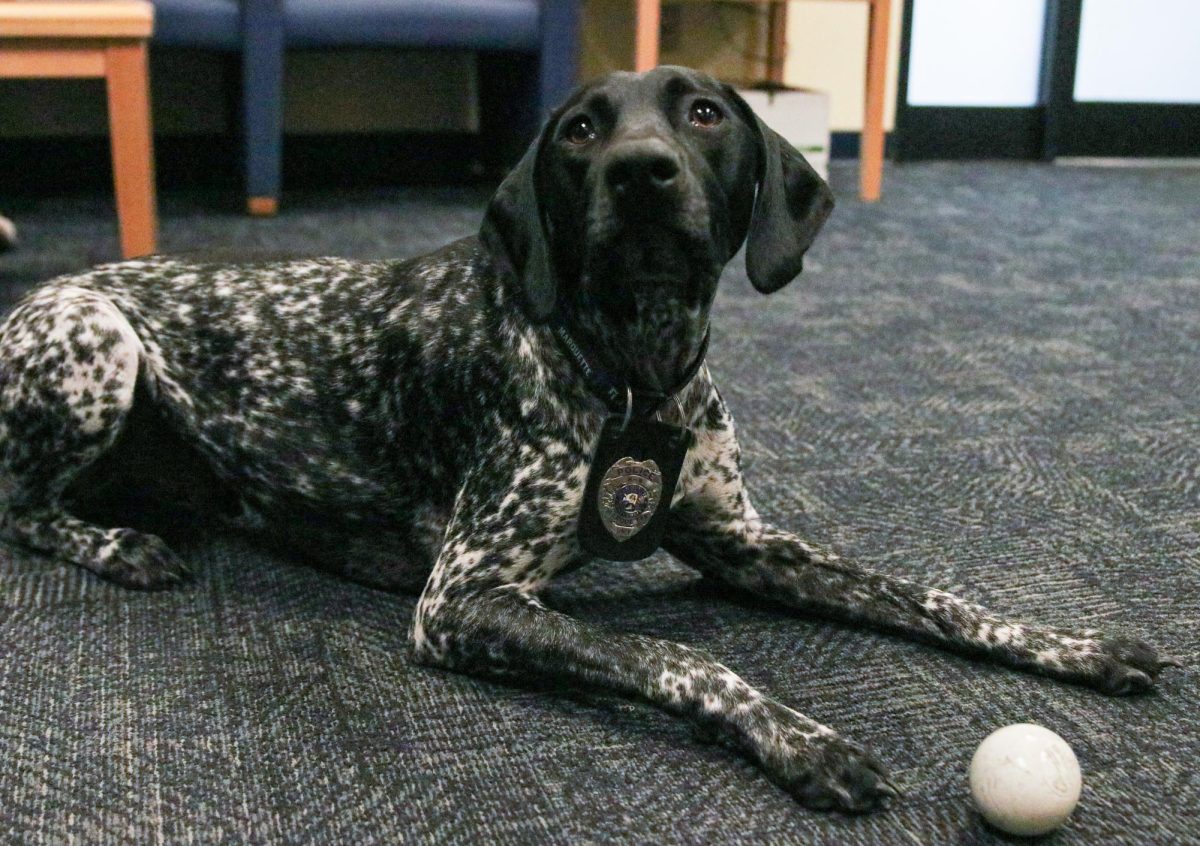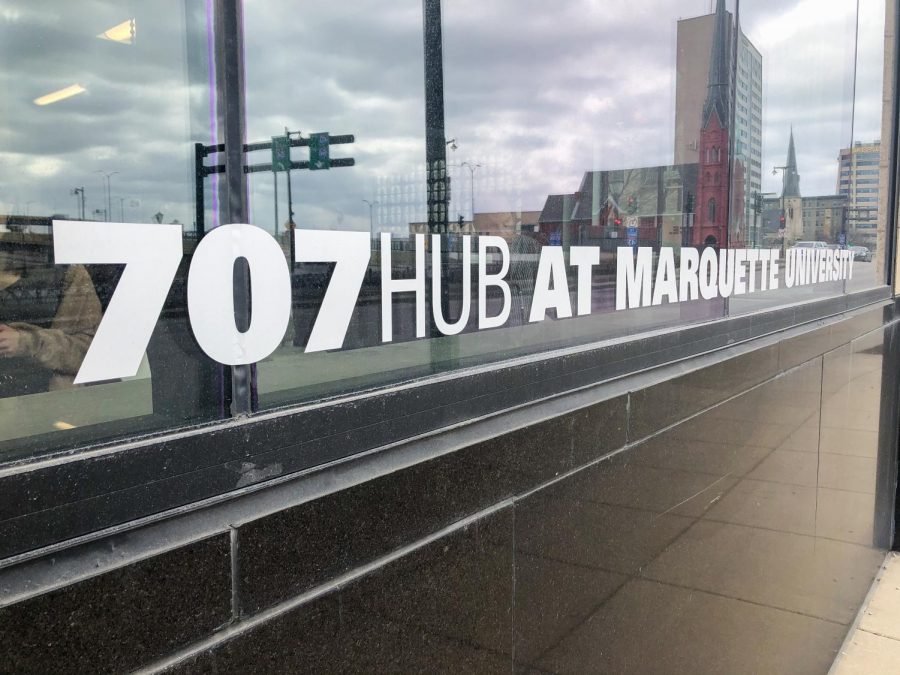Silence and delayed responsiveness can be detrimental to the Marquette community’s safety.
Marquette University President Michael Lovell shared an announcement Feb. 8 about changes to Marquette University Police Department in response to “higher than usual crime rates” on Marquette’s campus.
These changes include launching a task force to assess community safety and developing 30-day, 60-day and longer term plans. Four more MUPD officers will also be added to areas of campus where “pass-through” crimes occur and more LIMO drivers will be hired to increase services.
Additionally, Lovell said that required MUID swipe access will be added to residence halls as well as campus after business hours. He shared that he intends to reach out to community partners and law enforcement to learn about ways Marquette can be involved with addressing the roots of crime. Lovell also said MUPD will continue to use the “Crime Prevention Through Environmental Design” to assess different safety measures on campus, such as lighting, security cameras and “traffic calming measures.”
These changes to campus safety are definitely improvements that can help prevent more crime on campus, especially adding swipe access to campus buildings can add another layer of safety for students.
In addition to these changes, the university should also consider hiring a designated MUPD staff member who deals with safety alerts. University spokesperson Lynn Griffith said that the shift supervisor on each shift is currently authorized to write and send out the safety alerts.
There is currently no designated MUPD staff member who deals with safety alerts. Rather, the shift supervisor on each shift is authorized to write and send out the safety alerts.
There have been consistent and ongoing issues with the timeliness and level of detail of MUPD’s safety alerts. This can lead not only to the possibility of students spreading misinformation but also to the possibility of panic.
An incident of student panic occurred Friday, Feb. 4 in the Alumni Memorial Union Ballrooms, and some students told the Marquette Wire differing stories of what actually happened.
MUPD sent an alert at 5:55 p.m.: “Police presence at AMU due to emergency exit door alarm accidental activation. No threat to campus. No shelter in place order.”
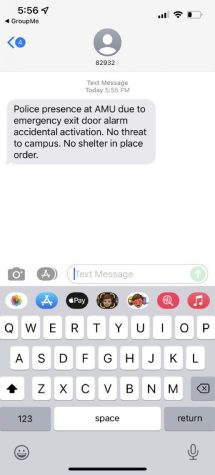
Some students were texting their friends not to come near the AMU because of what they perceived to be a threatening situation.
In a now deleted post, one Instagram account @marquette_affirmations even posted a photo of the AMU with the words “The AMU is not on lockdown” at 5:50 p.m, which was an entire 5 minutes before MUPD sent out the safety alert.
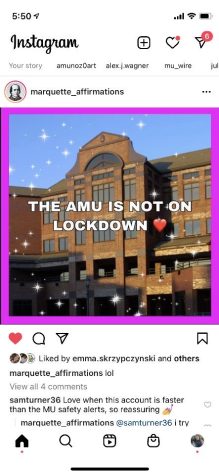
Students shouldn’t have to rely on each other for information because MUPD’s safety alerts are not sent out fast enough.
MUPD usually sends a follow-up email about the incident after sending out a safety alert. However, there was no follow-up email about the Feb. 4 incident.
Griffith said that text messages are sent to students, faculty and staff who opt into text alerts when there is either an active threat to campus or when there is an incident on campus that is not an active threat; this would include information about a police presence on campus or for people to stay away from an investigation area.
Griffith also said that the text safety alerts are intended to inform students to avoid specific areas and/or be aware of people who match descriptions that MUPD sends out.
Another recent example of slow responsiveness was when MUPD was assisting the Milwaukee Police Department with an investigation regarding the shooting of an MPD officer Jan. 27. The MUPD alert said, “Situation stabilized. No threat to campus.” There was no information about what the situation was, where it was occurring on campus or who was involved.
Both the Feb. 4 safety alert and especially the Jan. 27 safety alert provide little detail about each incident.
In the Jan. 27 safety alert, students who didn’t know what was happening were left to wonder what and where “situation” was stabilized.
MUPD did send subsequent messages after its initial message, but the separation of information likely led to panic and the spread of more misinformation.
The second alert was sent at 7:16 p.m.: “MUPD assisting MPD. No active threat to campus. Stay away from police investigation west of 16th Street.”
The third alert was sent at 8:29 p.m.: “Continued police presence on campus due to MPD investigation of non-MU incident. Situation is stable and no active threat to campus.”
The information across the three alerts should have been combined into one message, considering that there were 16 minutes between the second and first, and over an hour between the third and the second message were sent.
At the time the first alert was sent Jan. 27, MUPD was already assisting MPD and students; they should have informed students of that from the start. This could have dispelled misinformation and prevented unnecessary panic.
Hiring an MUPD staff member who is responsible for sending out safety alerts could improve timeliness, decrease inconsistencies across messages and alleviate responsibilities from shift supervisors who can focus on maintaining campus safety.
While the new changes to improve safety are a positive step, prompt and sufficient communication cannot be left out when considering student safety.
Editorial topics by the Marquette Wire are decided at weekly meetings between members of the executive board. The editorial is crafted with leadership by the executive opinions editor. The executive board consists of the executive director of the Wire, managing editor of the Marquette Tribune, managing editor of the Marquette Journal, general manager of MUTV, general manager of MUR and ten additional top editors across the organization.



